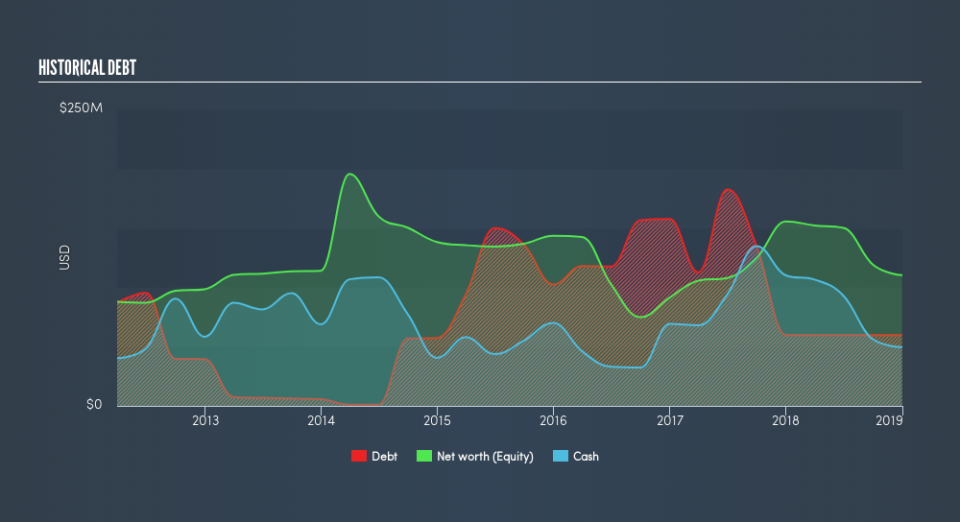How Financially Strong Is Philly Shipyard ASA (OB:PHLY)?

Philly Shipyard ASA (OB:PHLY) is a small-cap stock with a market capitalization of øre436m. While investors primarily focus on the growth potential and competitive landscape of the small-cap companies, they end up ignoring a key aspect, which could be the biggest threat to its existence: its financial health. Why is it important? Given that PHLY is not presently profitable, it’s crucial to evaluate the current state of its operations and pathway to profitability. Here are a few basic checks that are good enough to have a broad overview of the company’s financial strength. Nevertheless, this commentary is still very high-level, so I recommend you dig deeper yourself into PHLY here.
How does PHLY’s operating cash flow stack up against its debt?
Over the past year, PHLY has maintained its debt levels at around US$60m which accounts for long term debt. At this current level of debt, PHLY’s cash and short-term investments stands at US$50m for investing into the business. Moving onto cash from operations, its small level of operating cash flow means calculating cash-to-debt wouldn’t be too useful, though these low levels of cash means that operational efficiency is worth a look. For this article’s sake, I won’t be looking at this today, but you can assess some of PHLY’s operating efficiency ratios such as ROA here.
Can PHLY pay its short-term liabilities?
At the current liabilities level of US$17m, it appears that the company has been able to meet these commitments with a current assets level of US$56m, leading to a 3.28x current account ratio. However, many consider a ratio above 3x to be high.
Can PHLY service its debt comfortably?
With a debt-to-equity ratio of 54%, PHLY can be considered as an above-average leveraged company. This is not uncommon for a small-cap company given that debt tends to be lower-cost and at times, more accessible. However, since PHLY is presently loss-making, sustainability of its current state of operations becomes a concern. Maintaining a high level of debt, while revenues are still below costs, can be dangerous as liquidity tends to dry up in unexpected downturns.
Next Steps:
Although PHLY’s debt level is towards the higher end of the spectrum, its cash flow coverage seems adequate to meet obligations which means its debt is being efficiently utilised. Since there is also no concerns around PHLY’s liquidity needs, this may be its optimal capital structure for the time being. I admit this is a fairly basic analysis for PHLY’s financial health. Other important fundamentals need to be considered alongside. You should continue to research Philly Shipyard to get a better picture of the small-cap by looking at:
Future Outlook: What are well-informed industry analysts predicting for PHLY’s future growth? Take a look at our free research report of analyst consensus for PHLY’s outlook.
Historical Performance: What has PHLY’s returns been like over the past? Go into more detail in the past track record analysis and take a look at the free visual representations of our analysis for more clarity.
Other High-Performing Stocks: Are there other stocks that provide better prospects with proven track records? Explore our free list of these great stocks here.
We aim to bring you long-term focused research analysis driven by fundamental data. Note that our analysis may not factor in the latest price-sensitive company announcements or qualitative material.
If you spot an error that warrants correction, please contact the editor at editorial-team@simplywallst.com. This article by Simply Wall St is general in nature. It does not constitute a recommendation to buy or sell any stock, and does not take account of your objectives, or your financial situation. Simply Wall St has no position in the stocks mentioned. Thank you for reading.


